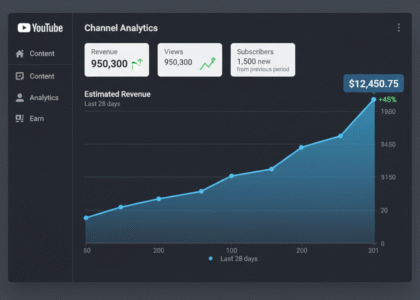Introduction: Why Understanding Health Insurance Basics is Crucial
In today’s world, health insurance is a necessity, not a luxury. Whether you’re starting your first job, planning for retirement, or navigating the complexities of self-employment, understanding the basics of health insurance is vital. Without it, you risk facing high medical costs that could derail your financial stability. Health insurance can protect your finances while ensuring you have access to the care you need. In this post, we’ll walk you through health insurance basics, breaking down the jargon, coverage options, and helpful tips so that you can make smarter choices for your healthcare.
1. What Is Health Insurance?

At its core, health insurance is a contract between you and an insurance company. In exchange for a premium, the insurer agrees to cover a portion of your healthcare costs, such as doctor visits, hospital stays, prescriptions, and preventive care. Health insurance policies typically have specific networks of doctors, hospitals, and clinics with which they have agreements to lower your costs.
Key Terms to Know:
- Premium: The monthly amount you pay for your insurance.
- Deductible: The amount you must pay out-of-pocket before insurance starts covering your healthcare costs.
- Copayment (Co-pay): A fixed amount you pay for a covered service, like a doctor’s visit or prescription.
- Coinsurance: The percentage of costs you pay after meeting your deductible.
- Out-of-Pocket Maximum: The most you’ll pay in a year for covered services. After reaching this limit, your insurer pays 100% of the costs.
2. Types of Health Insurance Plans

Health insurance plans can vary significantly in terms of coverage, cost, and how they work. The most common types include:
A. Employer-Sponsored Insurance
If you’re employed, your employer may offer health insurance. This is one of the most popular ways to get coverage. It’s often more affordable because employers typically cover a portion of the premium.
Pros:
- Affordable premiums (due to employer contribution).
- Convenience of payroll deductions.
Cons:
- Limited plan options.
- Coverage may end when you leave your job.
B. Individual Health Insurance
If you don’t have access to employer-sponsored insurance, you can purchase an individual plan directly through the health insurance marketplace or an insurance agent.
Pros:
- Flexibility to choose a plan that fits your needs.
- Can qualify for subsidies if you meet income requirements.
Cons:
- Potentially higher premiums compared to employer plans.
C. Medicaid
Medicaid is a state- and federally-funded program that provides health coverage for low-income individuals and families. Eligibility varies by state, but generally, it’s available to those who meet certain income and other criteria.
Pros:
- No monthly premiums for eligible individuals.
- Comprehensive coverage.
Cons:
- Eligibility and coverage vary by state.
D. Medicare
Medicare is a government program that provides health insurance to people aged 65 and older, or those under 65 with specific disabilities. It includes different parts for hospital care (Part A), medical services (Part B), and prescription drug coverage (Part D).
Pros:
- Covers a wide range of services for seniors.
- Reliable and consistent coverage.
Cons:
- May require supplemental plans (Medigap) for complete coverage.
- Not all healthcare providers accept Medicare.
3. Choosing the Right Health Insurance Plan

With so many health insurance options available, selecting the right plan can be overwhelming. Here are some tips to help you make an informed decision:
1. Understand Your Health Needs
Consider your current health and future medical needs. Do you require ongoing treatment for a chronic condition, or are you mostly healthy? This will help determine whether you should opt for a plan with lower premiums but higher deductibles or one with higher premiums and more comprehensive coverage.
2. Compare Costs
Look beyond the premium costs. Understand your deductible, copayments, coinsurance, and out-of-pocket maximums. A low premium can be tempting, but it may result in higher out-of-pocket costs when you need medical care.
3. Check the Network
Ensure your preferred doctors, hospitals, and specialists are covered under the plan’s network. Out-of-network care can be significantly more expensive, so understanding which providers participate is crucial.
4. Consider Prescription Drug Coverage
Prescription drugs can be a major expense, especially for seniors or those with chronic conditions. Review your plan’s prescription drug coverage, and make sure it includes the medications you need.
5. Evaluate Additional Benefits
Some health insurance plans offer extra benefits like vision, dental, or mental health coverage. Depending on your needs, these additional perks can be valuable.
4. How to Save on Health Insurance
Health insurance can be expensive, but there are several strategies to help you lower your costs:
1. Utilize Preventive Care
Many insurance plans offer free or low-cost preventive services, such as vaccines, screenings, and wellness visits. Taking advantage of these services can help prevent major health issues and reduce long-term healthcare costs.
2. Shop Around During Open Enrollment
During open enrollment periods, shop for plans that offer the best balance of premium, coverage, and network. Open enrollment typically occurs in the fall, but check with your employer or insurance marketplace for specific dates.
3. Consider a High-Deductible Health Plan (HDHP)
If you’re healthy and don’t anticipate needing a lot of medical care, an HDHP can offer lower premiums, making it a more affordable option. You can pair it with a Health Savings Account (HSA) to save on taxes.
4. Explore Government Programs
If you’re eligible for Medicaid or Medicare, explore these government options for more affordable coverage. Medicaid, in particular, can provide comprehensive coverage at little to no cost for eligible individuals.
(FAQs)
1. What is the best health insurance for young adults?
For young adults, employer-sponsored plans or individual marketplace plans are great options, depending on your health and budget. If you’re healthy and need minimal care, a low-premium, high-deductible plan may be ideal.
2. Can I get health insurance without a job?
Yes, you can apply for health insurance through the marketplace or qualify for Medicaid, depending on your income and other factors.
3. How do I know if I’m eligible for Medicaid?
Eligibility for Medicaid varies by state and is typically based on income, family size, and other factors. You can check with your state’s Medicaid office or visit the healthcare marketplace for more details.
4. What happens if I miss open enrollment?
If you miss open enrollment for a marketplace plan, you may qualify for a Special Enrollment Period (SEP) due to life changes, such as marriage or loss of job-based insurance.
Conclusion
Understanding health insurance basics is essential for making informed decisions about your healthcare. By evaluating your health needs, comparing plans, and utilizing available resources, you can choose the best health insurance plan for your situation. Don’t let confusion or complexity hold you back from securing the coverage you need to protect your health and finances.
Call to Action:
Want to learn more about managing your personal finances and making smarter healthcare decisions? Visit GetCashVibe for expert tips and guides on budgeting, investing, and more!






